Australian Penny types
Penny obverse master die types
The following tables illustrate the master dies use to strike Australian pennies. Following the pattern of Paul Holland's article, I assign a number to each obverse die and a letter to each reverse but whereas Paul starts the number/letter assignment anew with each major change in design (typically coinciding with a change in the British monarchy), I assign a unique number or letter to each die. One reason I do this is just for consistency.
There are some coins, notably the halfpennies and sixpences, where design changes do not coincide with the ascension of a British ruler and I simply prefer a scheme which works for all denominations.
A second and somewhat related reason is that I am working on a pseudo-taxonomic nomenclature for Australian Commonwealth coins and the scheme works better if there is no duplication of die identifiers.
Obverse 1
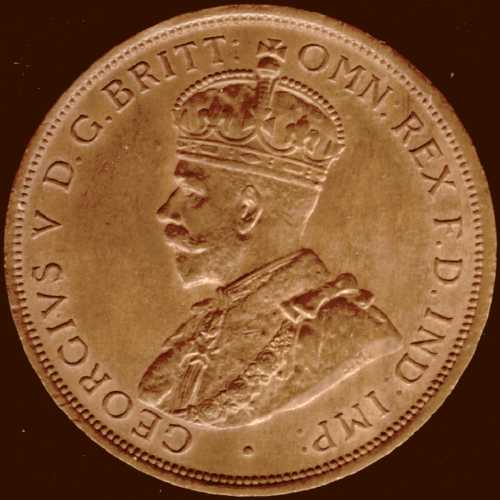
177 rim denticles.
Obverse 2
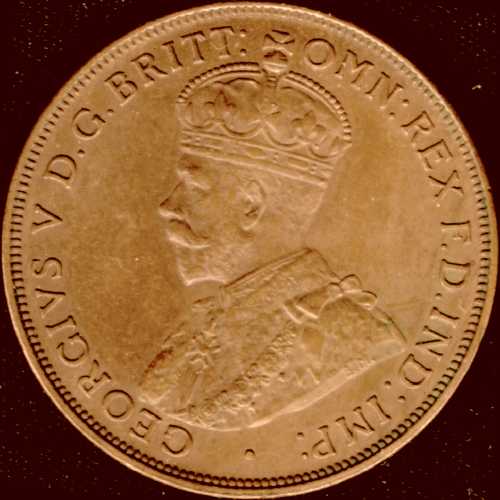
178 rim denticles
Distinguishing the George V obverses
The next table shows enlargements of some of the features which distinguish coins struck with the English and Indian dies. There are more distinguishing features than those shown below but these are the easiest to spot, especially on worn coins and on images posted on the Internet.
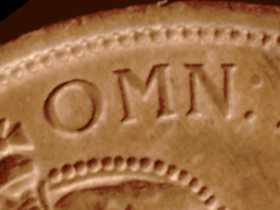
Wide gap between O and top of crown.
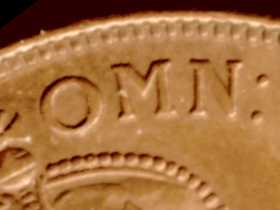
O closer to top of crown.
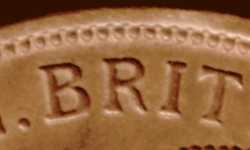
R has short leg with pronounced knee.
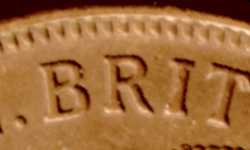
Longer. more relaxed leg on R.
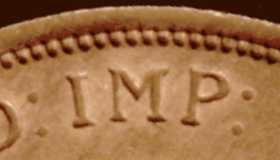
Both colons point directly at rim beads
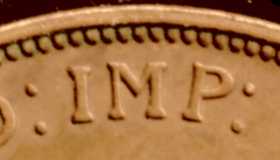
Both colons point between rim beads.
Obverse 3
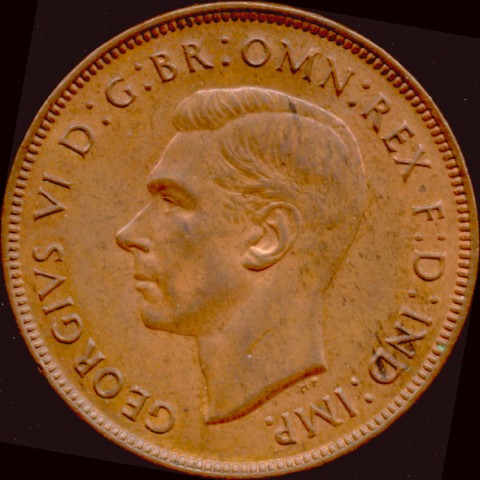
Used on all pennies struck in Australia 1938-1948. 156 rim denticles
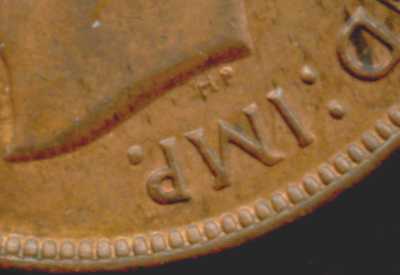
Short denticles. IMP has small serifs and letters are widely spaced. Vertical
stroke of P is aligned with a rim denticle.
Obverse 4
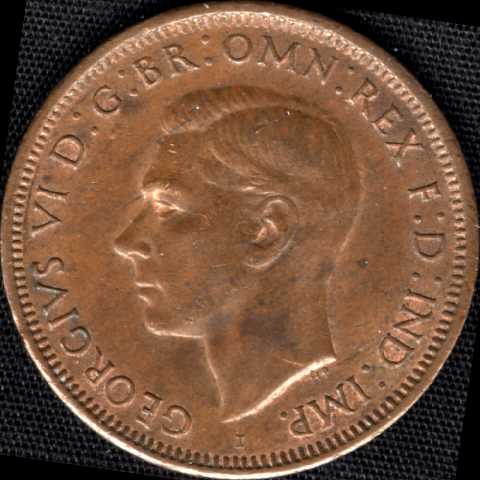
Used on pennies struck in Bombay, 1942 and 1943. 145 rim denticles. Mint mark "I" is usually present below the bust.
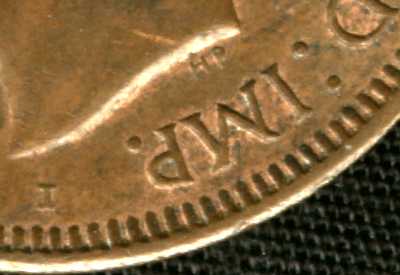
all denticles. Serifs are more pronounced and the letters almost touch. Vertical
stroke of P is aligned over the gap between rim denticles.
Obverse 5
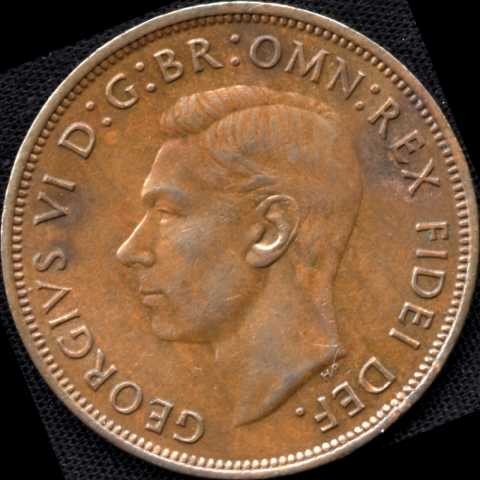
IND:IMP. deleted from legend and F:D expanded to FIDEI DEF. 155 rim denticles. This obverse was used for all pennies minted 1949-1952
Obverse 6
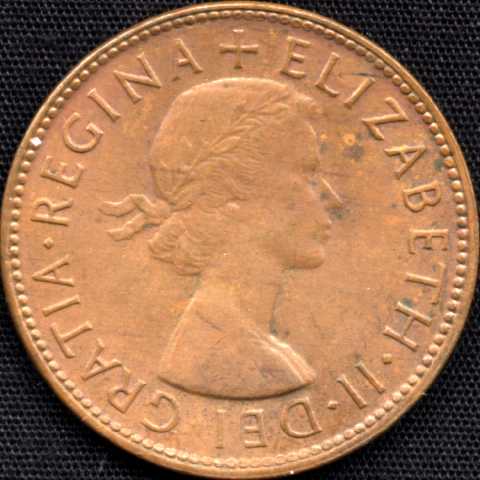
Used for coins struck in 1953 at the Melbourne mint. Rim embellishment comprises 116 round beads. F:D omitted from legend. I of GRATIA is aligned over the gap between two rim beads.
Obverse 7
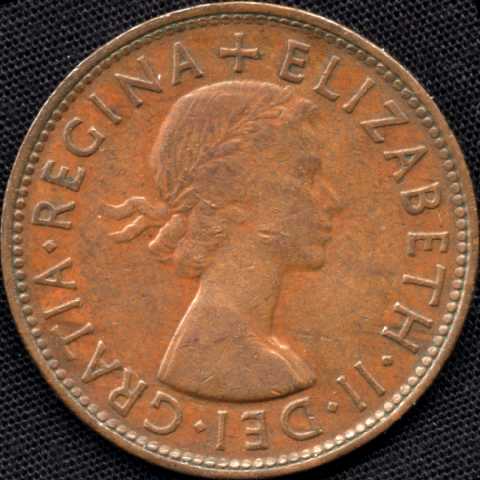
Used for coins struck at the Perth mint in 1953. Similar to obverse 6 except that there are 117 rim beads. I of GRATIA is aligned directly over a rim bead.
Obverse 8
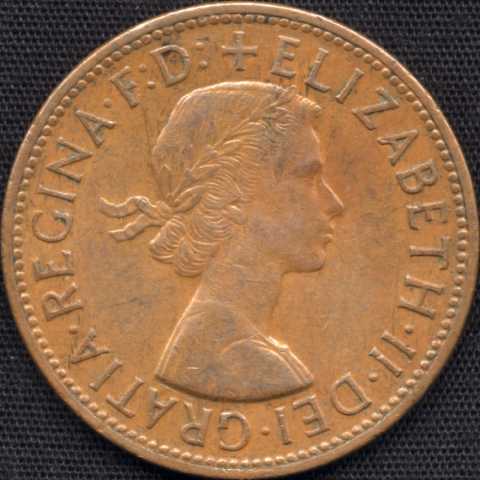
Used at Melbourne for coins struck from 1955 to 1964 inclusive and at the Perth mint for most 1955 and a few 1956 pennies. Similar to obverse 6 but with F:D: restored to the legend. 120 rim beads. I in GRATIA and in ELIZABETH each aligned with a rim bead.
Obverse 9
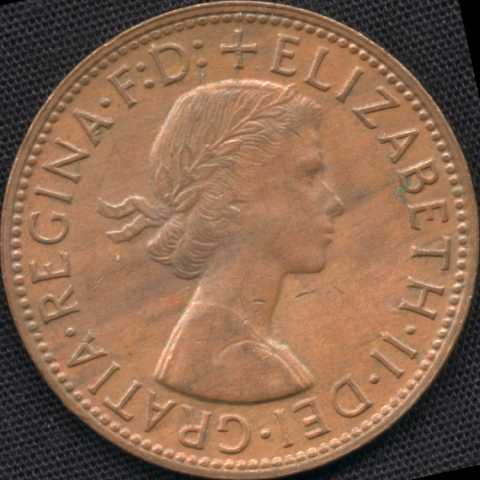
Used at the Perth mint for coins struck from 1955 to 1964. (The 1955 Perth penny with the type 9 obverse is rare.) Similar to obverse 8 except that there are 116 rim beads. I in GRATIA and in ELIZABETH each aligned with the gap between two rim beads.
Reverse master die types
Reverse A
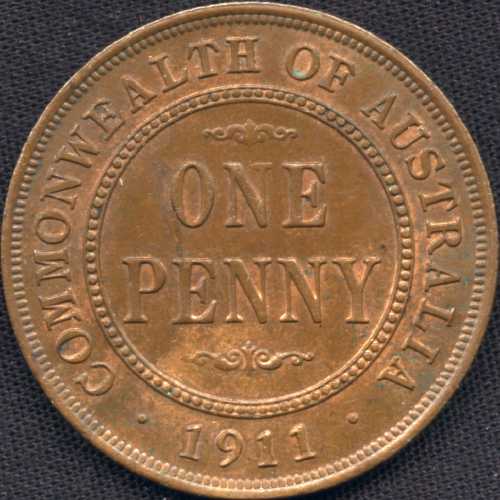
Used at London, Melbourne and Sydney mints, 1911-1931. 174 rim denticles.
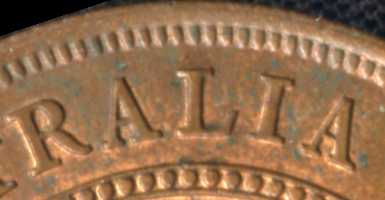
AL aligned with rim denticles, IA aligned with gaps between denticles
Reverse B
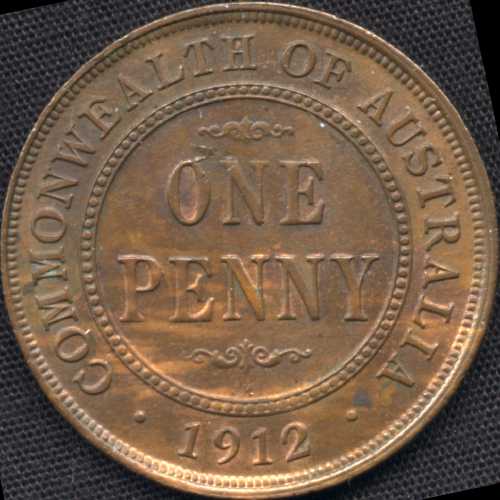
Used at the Heaton, London, Sydney, Melbourne and Perth mints, 1912-1936. 177 rim denticles.
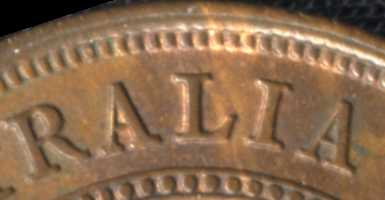
AL aligned between denticles, IA aligned with denticles.
Reverse C
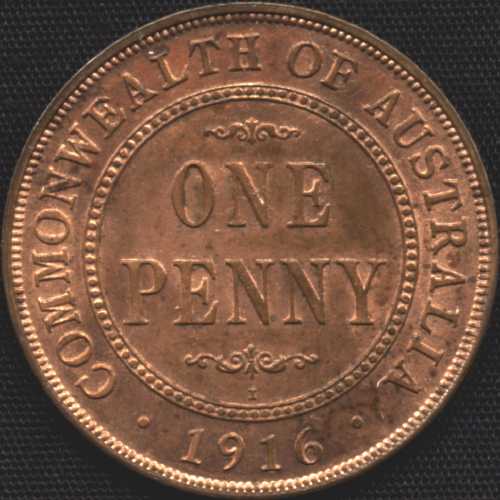
Used at the Calcutta, Sydney and Melbourne mints, 1916-1920. 178 rim denticles.
L aligned under a rim denticle, both As and the I aligned with gaps between denticles.
Reverse D
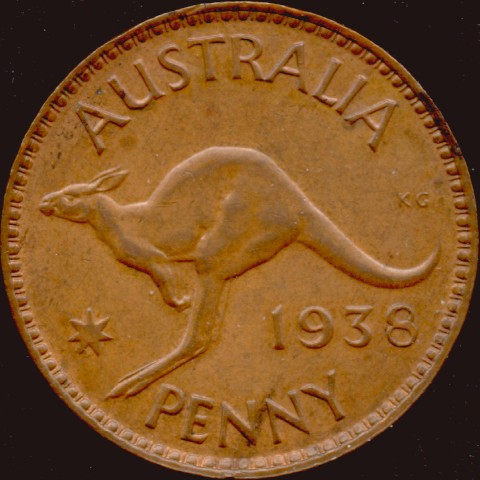
Used at Melbourne and Perth, 1938-1964. Rim embellishment comprises alternating thick and thin denticles, 81 of each. The vertical strokes of the P in PENNY and of the U in AUSTRALIA point at thick denticles while those of the L and I point at thin denticles.
Reverse E
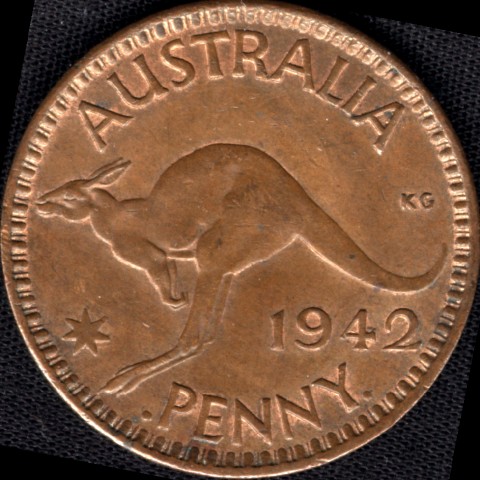
Used at the Bombay mint in 1942 and for a small portion of the 1943 minting. Similar to reverse D except that the rim denticles are considerably taller, there are only 77 of each. Also, the kangaroo is in lower relief and the lettering is somewhat bolder than on reverse D. Both the P and the Y of PENNY are aligned with thicker rim denticles and there are large dots before and after the P and Y respectively.
Reverse F
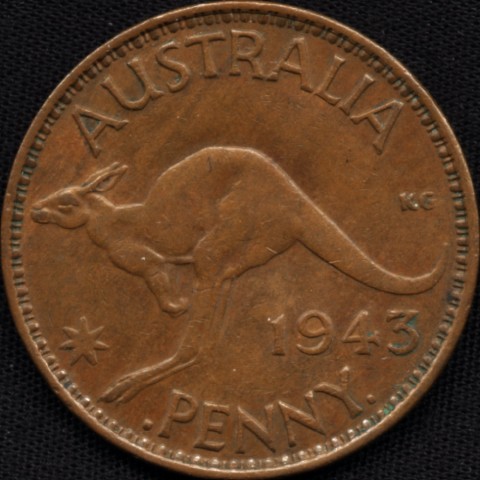
Identical to reverse E except that the rim denticles are shorter, more like those of reverse D. Used at the Bombay mint for most of the 1943 issue.
Reverse G
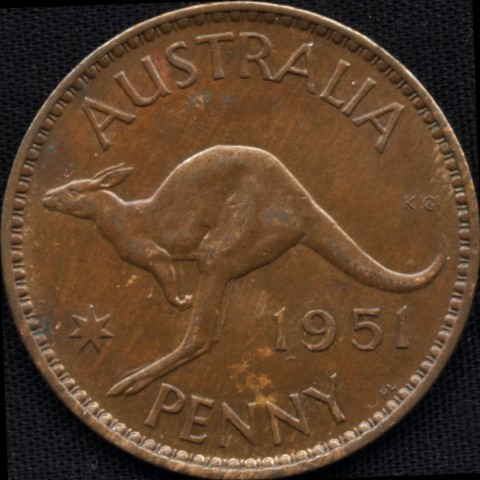
Very similar to reverse D, also having 81 thick and thin denticles. Differences include the alignment of the P in PENNY which now points at a thin denticle and the L and I in AUSTRALIA which point at wide denticles. This reverse was used at the London and Perth mints, 1951-1955.
Reverse H
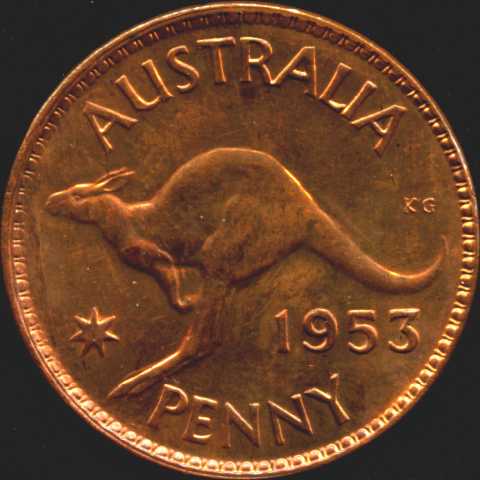
Again very similar to reverse D with 81 denticle pairs. The uprights of the U in AUSTRALIA point at thin denticles. Used at the Melbourne mint 1953-1959.
Reverse I
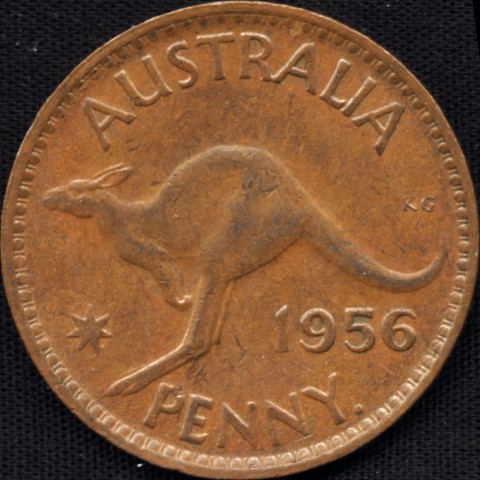
Used at the Perth mint1956-1964 this is yet again similar to reverse D. The uprights of the first N in PENNY point at thick denticles and those of the second N point at thin denticles. The vertical strokes of the U, L and I in AUSTRALIA all point at thick denticles.
Other Australian coins
Elizabeth II coins (1952-2022)

